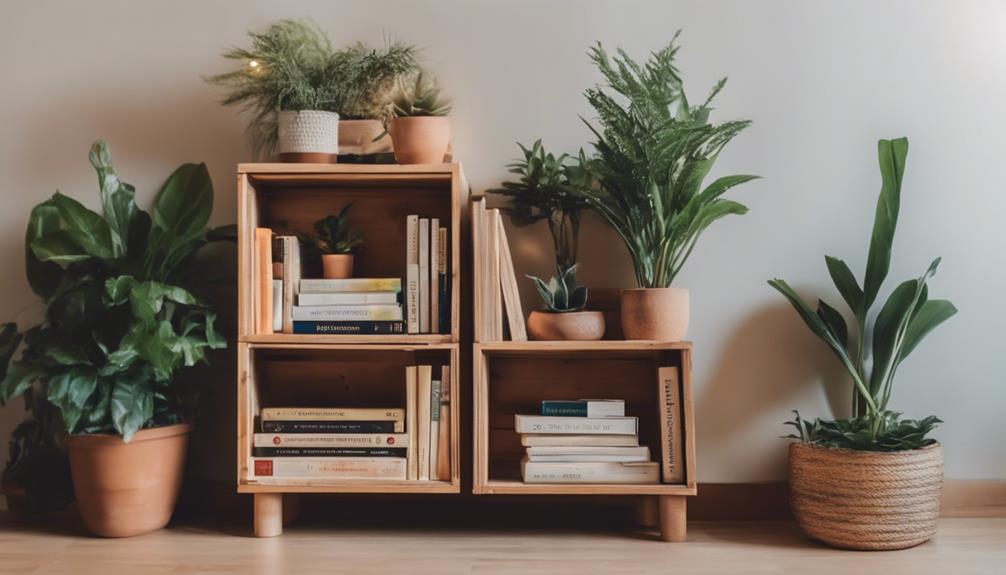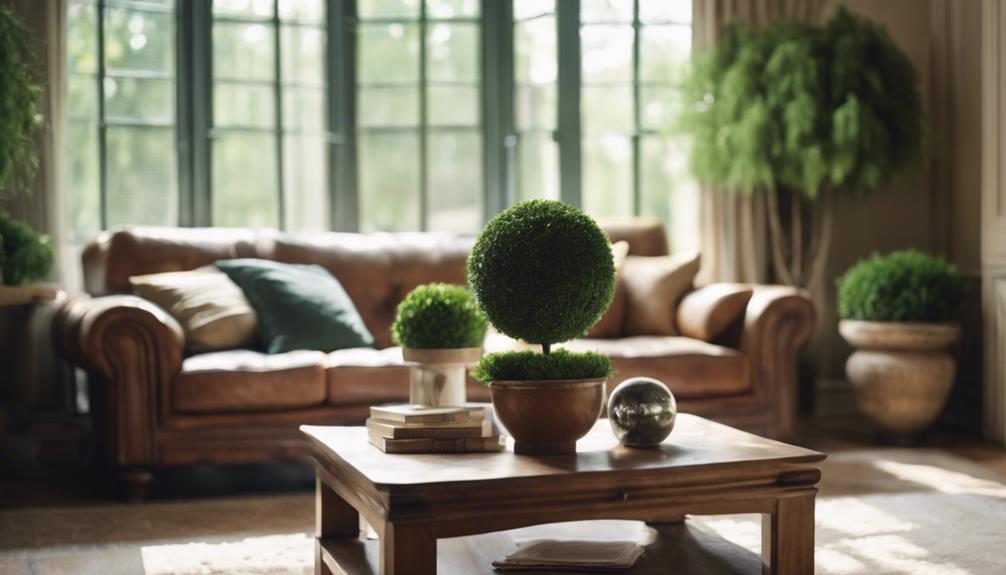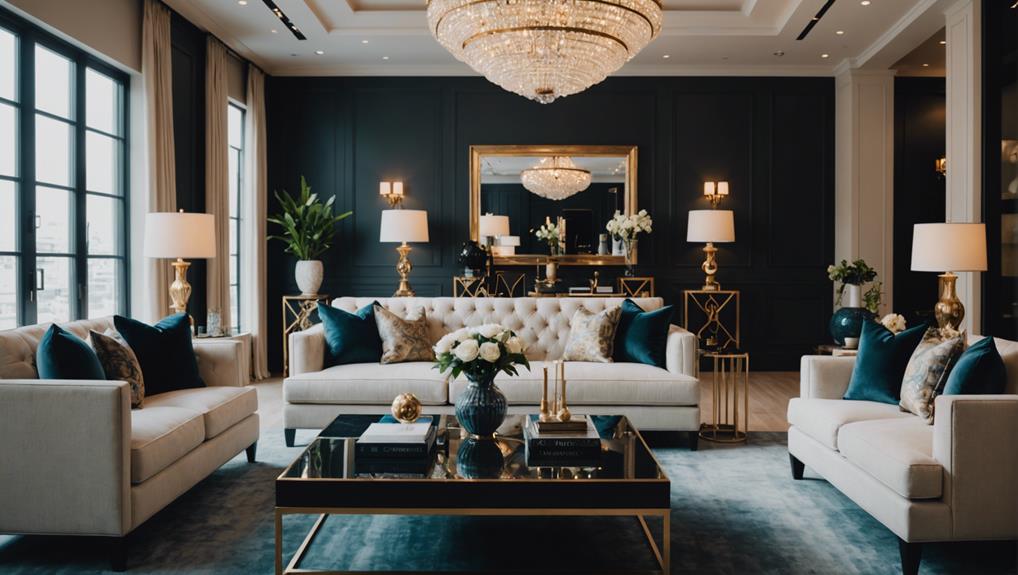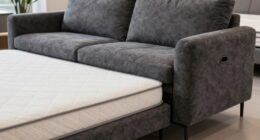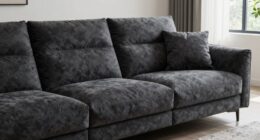Transforming an old dresser into a functional bookshelf is a creative and cost-effective way to repurpose furniture and add storage to your living space. To get started, gather necessary materials like shelves, paint, screws, and a drill, ensuring your dresser is sturdy and suitable for supporting additional weight. Measure the dresser's dimensions to determine the best shelf placement, and select paint colors that complement the room's decor. With proper preparation and execution, you'll be on your way to creating a one-of-a-kind bookshelf that showcases your personal style. As you move forward, the details will come together to reveal a unique piece of furniture.
Key Takeaways
• Prepare the dresser by emptying and cleaning it, removing old hardware, and sanding the surfaces for a smooth finish.
• Choose the right paint and primer to ensure a durable and professional-looking finish that complements the room's decor.
• Add stability to the bookshelf by securing the legs with metal plates and attaching them to the wall for extra support.
• Assemble the shelves and frames, ensuring they are level and plumb, and attach them securely to the dresser using appropriate screws or brackets.
• Enhance the aesthetic appeal of the bookshelf by adding decorative elements, such as drawer lips, to create a unique and functional design.
Gathering Materials and Tools
Start by gathering all the necessary materials and tools, including the dresser, shelves, paint, screws, drill, screwdriver, and level, to make sure you have everything you need before beginning the project. Having all the materials within reach will save you time and frustration in the long run.
Make sure your dresser is sturdy and suitable for supporting additional weight, as you'll be adding shelves on top. Measure the dresser's dimensions to plan shelf placement for a best fit. Select paint colors and finishes that complement the dresser and room decor, ensuring a cohesive look.
Don't forget to gather safety gear, such as goggles and gloves, to protect yourself while working with power tools. Remember to follow instructions carefully when using drills, screwdrivers, and other tools to avoid accidents.
With all your materials and tools ready, you'll be well-prepared to start transforming your dresser into a unique bookshelf.
Preparing Drawers for Upcycle
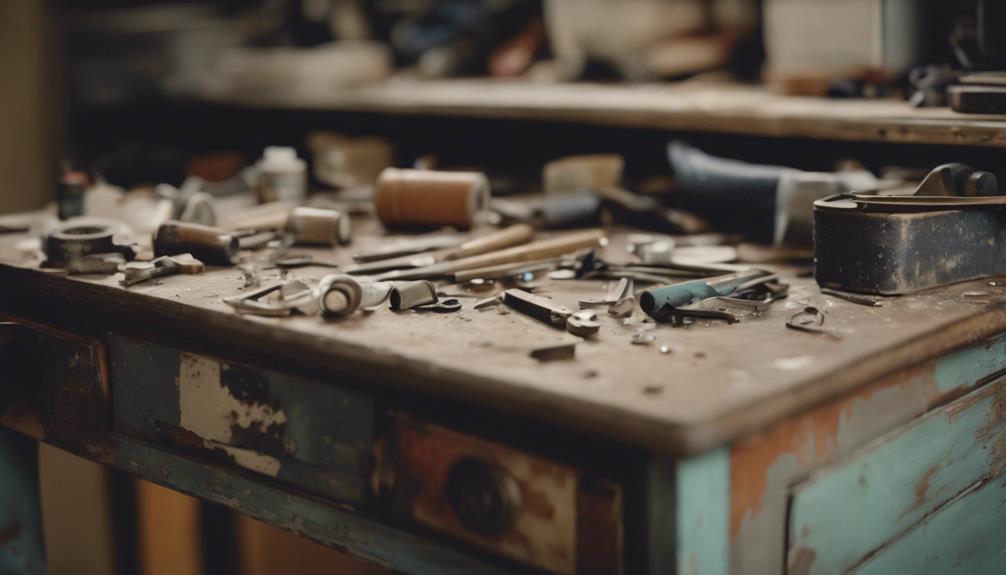
As you begin preparing your dresser drawers for upcycling, you'll need to empty and clean them thoroughly, removing any remaining items or debris.
Next, take out your screwdriver and remove the old hardware, including handles and tracks, to create a blank slate for your project.
Empty and Clean Drawers
Remove the hardware from your dresser drawers and give them a thorough cleaning to clear out any dirt, dust, or debris that may be hiding inside. This step is important in preparing your drawers for upcycling, as any remaining dirt or debris can impact the final outcome of your project.
As you clean, take note of any imperfections on the drawer fronts, such as holes or scratches, and fill any holes with a wood filler or spackling compound to create a smooth surface. This will guarantee a professional finish when you're done.
Make sure to wipe down the drawers with a damp cloth to remove any dust or dirt that may have accumulated during the cleaning process. Once you've cleaned and filled any holes, your drawers are ready for the next step in the upcycling process.
Remove Old Hardware
With your drawers clean and holes filled, you're ready to tackle the old hardware that's holding you back from upcycling your dresser into a bookshelf.
It's time to remove old hardware, an important step in transforming your dresser into a functional bookshelf. Start by unscrewing knobs and handles from the dresser drawers. This will leave holes behind, but don't worry – you've already filled them with wood filler, creating a smooth surface.
Now, you can focus on removing the old hardware without worrying about uneven surfaces. As you remove the hardware, take note of any remaining residue or old adhesive. You'll need to sand these areas to make sure a smooth finish.
Prepare for Painting
You'll need to give your drawers a thorough makeover to prepare them for painting, starting with a good sanding to remove the old finish and create a smooth surface. Sand your drawers to remove any imperfections and create a surface that's ready for paint.
| Step | Task | Importance |
|---|---|---|
| 1 | Sand drawers | High |
| 2 | Fill holes with wood filler | Medium |
| 3 | Clean drawers thoroughly | High |
| 4 | Apply painter's tape | Medium |
| 5 | Apply primer | High |
After sanding, fill any holes or imperfections with wood filler to guarantee a seamless look. Clean your drawers thoroughly to remove any dust, dirt, or grease that may impact the paint. Use painter's tape to protect any hardware or areas that you don't want to paint. Finally, apply a coat of primer to improve the adhesion and coverage of the paint. By following these steps, you'll be ready to paint your drawers and give them a fresh new look.
Sanding and Smoothing Surfaces
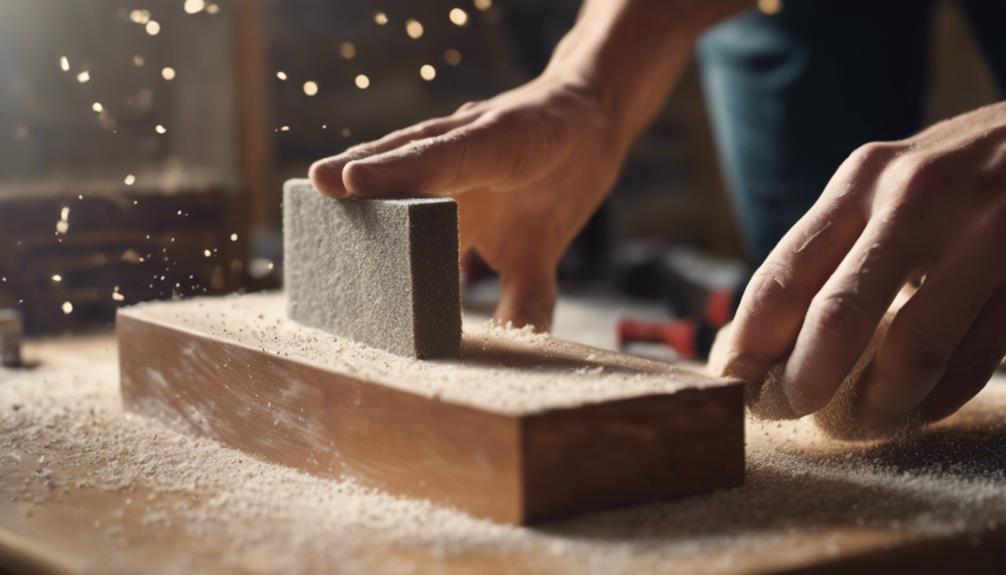
As you progress with your DIY bookshelf project, it's crucial to make sure your surfaces are smooth and even.
Now that you've prepared your drawers for upcycling, it's time to focus on sanding and smoothing surfaces, which involves checking for imperfections and choosing the right sandpaper grit levels to achieve a polished finish.
Sandpaper Grit Levels
When tackling your DIY bookshelf project, you'll need to choose the right sandpaper grit level to effectively smooth out the surfaces of your dresser. Sandpaper grit levels determine the coarseness of the sandpaper, with lower numbers indicating rougher grit for heavy sanding. Higher grit numbers indicate finer sandpaper for smoothing surfaces and finishing touches.
Here's a breakdown of common sandpaper grit levels and their uses:
| Grit Level | Use | Surface Type |
|---|---|---|
| 80-120 | Initial sanding | Rough wood, metal |
| 180-320 | Smoothing | Wood, metal, drywall |
| 1000-3000 | Finishing touches | Delicate surfaces, wood finishes |
Understanding sandpaper grit levels is essential to achieve the desired results in sanding and smoothing surfaces effectively. By choosing the right grit level, you'll be able to tackle your DIY bookshelf project with confidence. Remember, the appropriate grit level depends on the material being sanded and the desired finish. With this knowledge, you'll be well on your way to creating a beautiful and functional bookshelf on top of your dresser.
Surface Imperfection Check
Now that you've selected the right sandpaper grit level, it's time to inspect the dresser surface for imperfections that need smoothing out. As you begin sanding, pay close attention to any rough patches, scratches, or dents that could impact the paint job.
Sanding is vital to smooth out these imperfections, guaranteeing a clean and even surface for painting. By doing so, you'll create an ideal surface for the paint to adhere to, resulting in a professional finish. Smooth surfaces also prevent paint from cracking or chipping over time, which is especially important for a DIY bookshelf project that's meant to last.
Properly sanded surfaces enhance the overall look and durability of your project, making it a worthwhile step in the process. Remember to work methodically, section by section, to ensure that every area of the dresser is smooth and even.
With patience and attention to detail, you'll be rewarded with a beautiful, long-lasting finish.
Painting and Priming Drawers
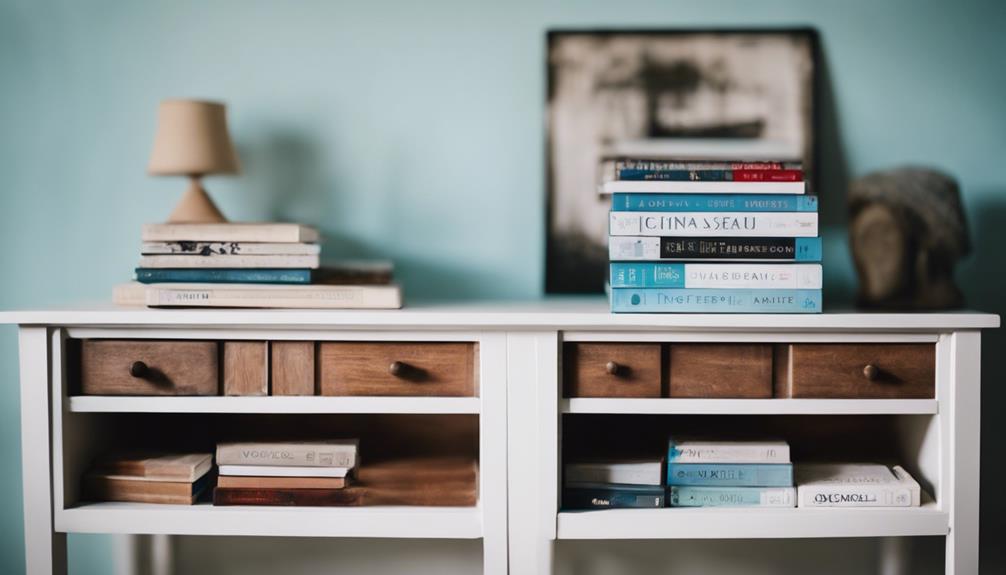
You'll need to prime your drawers before painting to guarantee a durable, long-lasting finish. This important step ensures that your paint job looks great and lasts for years to come. Without priming, you risk a finish that's prone to chipping and fading.
Here are the key benefits of priming and painting your drawers:
- Smooth finish: Sanding and priming help create a smooth surface for painting, eliminating imperfections and ensuring a professional-looking finish.
- Durable paint job: Primer helps paint adhere better, preventing chipping and fading, and ensuring a consistent color.
- Long-lasting results: Proper preparation before painting extends the longevity and quality of your finished bookshelf.
- Professional look: With a well-primed and painted surface, your DIY bookshelf will look like it was built by a pro.
Attaching Legs for Stability
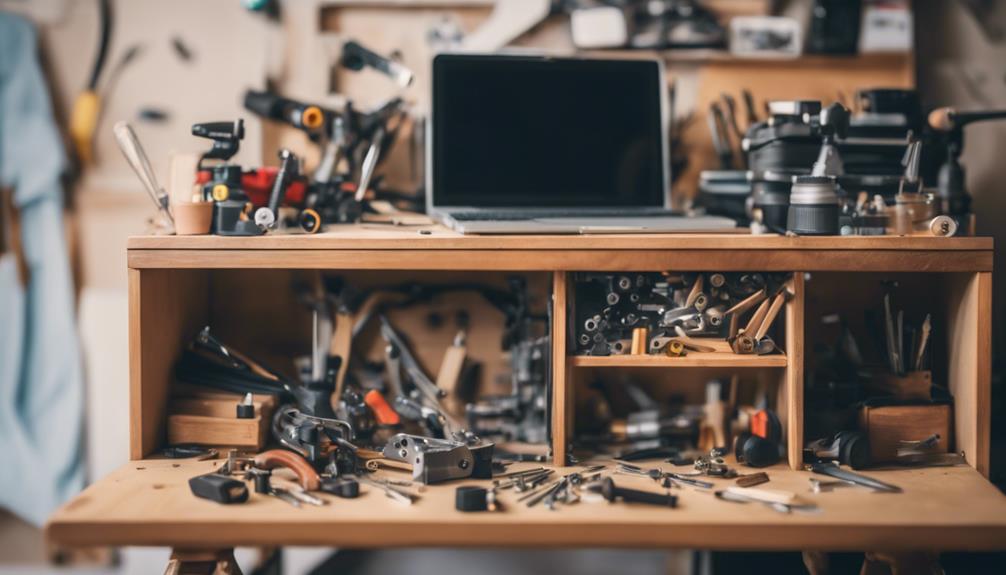
As you move on to attaching legs for stability, you'll want to ponder the sturdy attachment options that will guarantee your bookshelf remains steady.
You'll need to explore secure fitting methods, such as using metal plates, to secure a stable base for your DIY project.
Leg Sturdy Attachment Options
To guarantee your DIY bookshelf on top of a dresser remains stable and sturdy, you'll want to focus on securely attaching the legs to the dresser using metal plates from Home Depot. This is an important step to make sure your bookshelf doesn't topple over.
Here are some key considerations for leg sturdy attachment options:
- Metal plates: Use metal plates from Home Depot to securely attach the slim and simple legs to the dresser.
- Wood glue: Apply wood glue to firmly attach the drawers together in the desired order before painting.
- No screws: Avoid using screws between drawers due to the spaces, creating a charming space between each shelf.
- Wall support: Ensure stability by inserting a screw through the bottom shelf into the wall for added support.
Secure Fitting Methods Used
By attaching the legs to the dresser using metal plates from Home Depot, you create a sturdy base that prevents the bookshelf from tipping over. This secure fitting method guarantees that your DIY bookshelf remains stable and safe to use.
The metal plates provide a strong foundation, allowing you to confidently place your favorite books and decorative items on the shelves. To further enhance stability, the legs received two coats of custom Fusion paint mix before being attached to the drawers. This not only adds an extra layer of protection but also gives your bookshelf a personalized touch.
Leveling and Balancing Tips
You'll achieve a sturdy and balanced DIY bookshelf by attaching slim and simple legs to the dresser drawers, guaranteeing your creation remains stable and level. This is especially crucial when you're repurposing a dresser, like turning it into a sewing machine station or a bookshelf.
Attaching legs to the drawers provides the necessary stability to hold the weight of your books and decorative items.
To guarantee your DIY bookshelf is level and balanced, follow these tips:
- Attach legs securely: Use metal plates from Home Depot to connect the legs to the drawers, ensuring a sturdy base.
- Add a screw for extra stability: Drive a screw through the bottom shelf into the wall to prevent the bookshelf from tipping.
- Apply a seamless finish: Apply two coats of Fusion Mineral Paint to the legs after attachment for a seamless look.
- Connect drawers securely: Use wood glue to link the drawers in the desired order before assembly, ensuring a stable structure.
Assembling Shelves and Frames
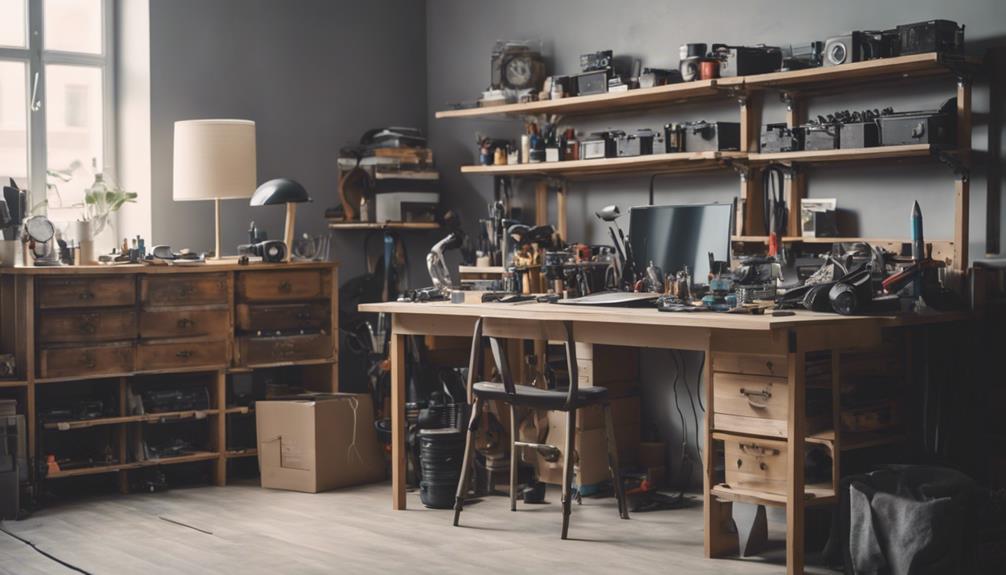
With your dresser prepared, begin assembling shelves and frames, making sure they're perfectly level and plumb to avoid a wonky arrangement. Use a level to guarantee your shelves and frames are assembled straight and even.
Take a moment to measure and mark the placement of your shelves and frames before attaching them. This will save you the hassle of repositioning them later.
When securing your shelves to the dresser, use appropriate screws or brackets that can support the weight capacity of the dresser. Keep in mind the weight capacity of the dresser when adding shelves and frames, ensuring it can hold the additional weight.
To secure frames firmly, use a stud finder to locate wall studs. By following these steps, you'll be able to create a sturdy and level bookshelf on top of your dresser.
Adding Decorative Drawer Lips
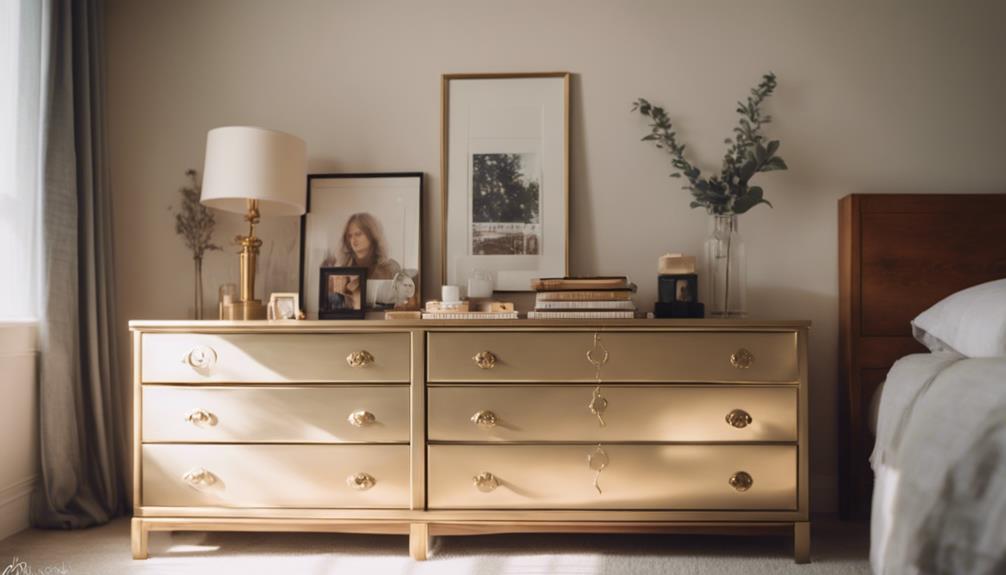
Get creative with your bookshelf's design by incorporating decorative drawer lips, which add a touch of elegance and whimsy to the overall look. You can repurpose the dresser drawers to create a unique and functional bookshelf. The addition of drawer lips won't only enhance the aesthetic appeal but also provide a functional element to the design.
Here are some benefits of incorporating decorative drawer lips:
- Charming spaces: Drawer lips create charming spaces between shelves for a unique look.
- Visual interest: They add a touch of character and visual interest to the bookshelf.
- Aesthetic appeal: The design choice of drawer lips enhances the overall aesthetic appeal of the bookshelf.
- Functional element: Drawer lips provide a functional and decorative element to the repurposed dresser drawers.
Securing Shelves to Wall
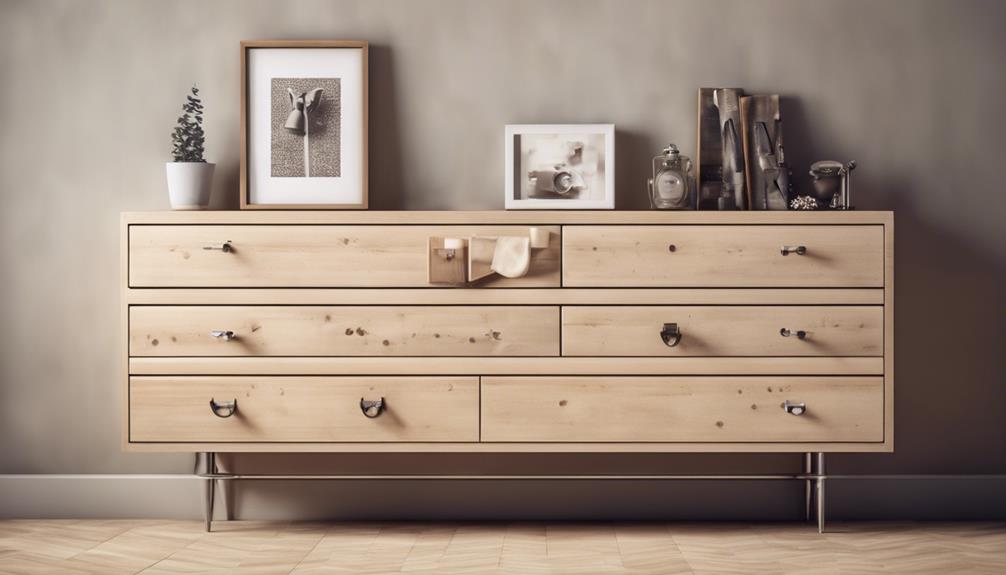
Secure your DIY bookshelf to the wall by inserting screws through the bottom shelf into the wall, ensuring stability and preventing accidental tipping. This essential step in your dresser makeover guarantees the safety and stability of your new bookshelf. By doing so, you'll prevent the shelves from shifting or toppling over, giving you peace of mind and a professional-looking finish.
| Step | Description | Tips |
|---|---|---|
| 1 | Identify the wall studs | Use a stud finder to guarantee secure anchoring |
| 2 | Mark the screw locations | Measure carefully to maintain even spacing |
| 3 | Drill pilot holes | Avoid splitting the wood or wall |
| 4 | Insert screws | Use wall anchors for added support |
| 5 | Tighten screws | Check for levelness and stability |
Remember to avoid using screws through the sides of the dresser to maintain the integrity of the structure. Proper alignment and leveling are key to a successful installation. By following these steps, you'll enjoy a sturdy and reliable bookshelf that complements your dresser makeover.
Final Touches and Embellishments
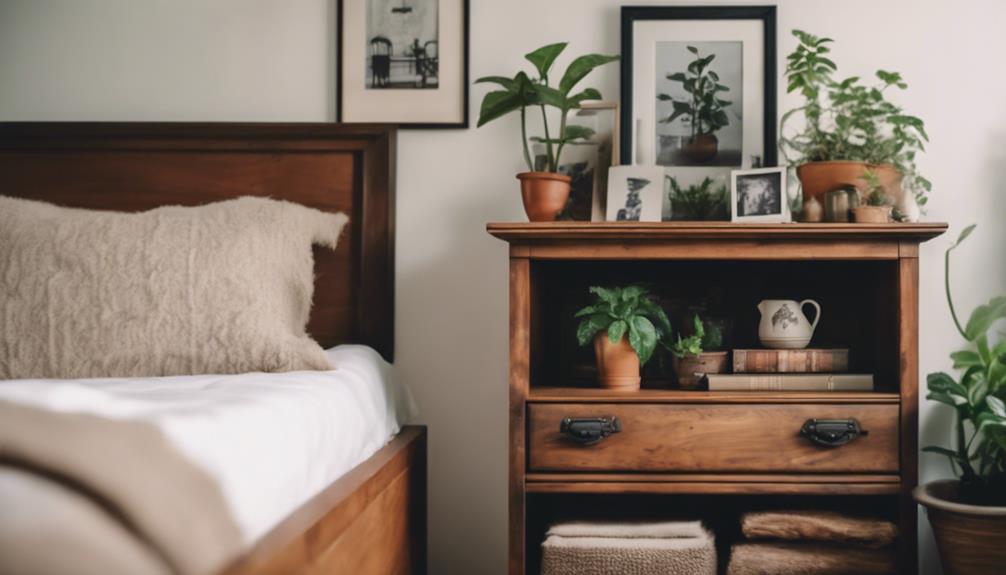
Now that your DIY bookshelf is securely in place, you're ready to add the finishing touches that will make it truly shine. This is where you can get creative and add those special embellishments that make your bookshelf truly unique.
To take your bookshelf to the next level, consider the following:
- Add decorative knobs or drawer pulls to give your bookshelf a personalized touch.
- Add trim or molding to the edges of the shelves to enhance the overall appearance.
- Paint or stain the bookshelf to match the room's decor for a cohesive look.
- Incorporate decorative decals or stencils to create visual interest and uniqueness.
These final touches will make your DIY bookshelf stand out and make it a beautiful addition to your room.
By incorporating these embellishments, you'll be able to create a one-of-a-kind bookshelf that reflects your personal style. So, don't be afraid to get creative and make your bookshelf truly special.
With these finishing touches, you'll be able to enjoy your new bookshelf for years to come.
Installing Bookshelf on Dresser
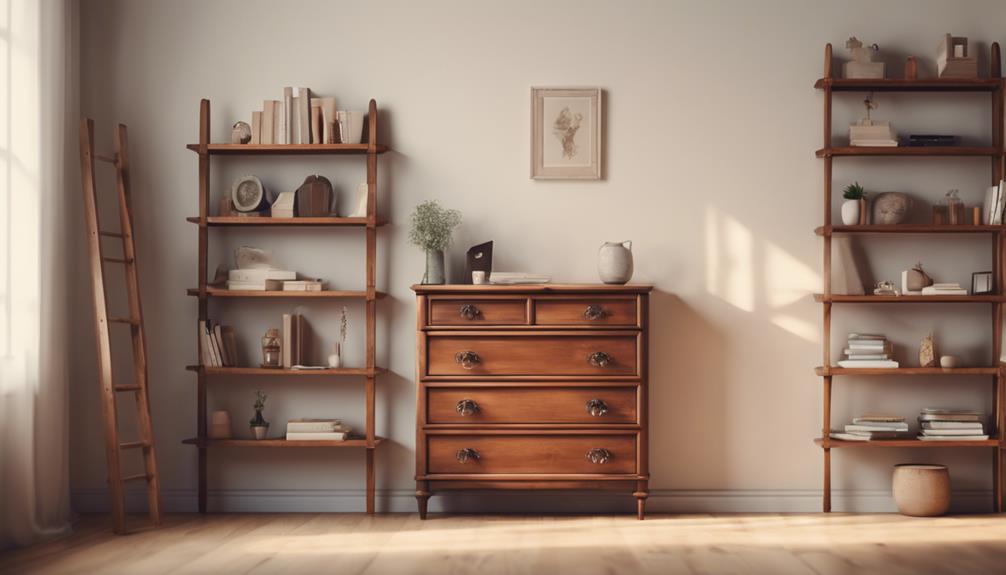
You've added the final flourishes to your DIY bookshelf, and now it's time to attach it to the dresser, a task that demands meticulous planning and attention to detail to guarantee a sturdy and safe installation.
As you prepare for installation, remember that securely fastening the bookshelf to the dresser is essential for stability and safety. Consider the weight capacity of both the dresser and bookshelf to prevent damage or collapse.
Gather your installation tools, including a drill, screws, and wall anchors, to assure a strong and durable connection. When attaching the bookshelf on dresser, make sure to distribute the weight evenly and avoid overloading the dresser.
Frequently Asked Questions
Can I Put a Bookshelf on Top of a Dresser?
You're wondering if you can put a bookshelf on top of a dresser, and the answer is yes, you can! As long as your dresser is sturdy enough to support the weight of the bookshelf and its contents, you're good to go.
Just make sure the dresser can handle the extra load, and consider securing the bookshelf to the dresser or wall for added stability.
Can You Turn a Dresser Into a Bookcase?
You're wondering if you can breathe new life into an old dresser by transforming it into a bookcase. The answer is a resounding 'yes!'
Think of it as giving your dresser a career change – from storing clothes to showcasing your favorite novels.
How to Convert Dresser Drawers to Shelves?
When converting dresser drawers to shelves, you'll want to start by removing the hardware and filling in any holes. Sand the surface to create a clean slate.
Then, paint each drawer individually to give them a unique look. Once dry, assemble the drawers in your desired order, using wood glue to secure them.
Leave space between each shelf for a charming, layered effect. This process allows you to upcycle old drawers into functional, one-of-a-kind shelves.
How to Make Your Target Bookshelves Look Built-In?
You're not alone in wanting to create a built-in look with your Target bookshelves – in fact, 75% of homeowners prioritize aesthetics when designing their spaces.
To achieve this polished look, start by cutting out existing baseboards and trimming the top piece for a flush fit.
Then, insert scrap wood to fill side gaps and build a platform for extra height if needed.
Conclusion
With your DIY bookshelf on top of a dresser now complete, you've transformed a humble piece of furniture into a towering achievement, much like the ancient Greeks who built the Parthenon upon the ruins of an ancient temple.
Your creative vision has elevated the ordinary to the extraordinary, a true masterpiece that will stand the test of time.
Stand back, admire your handiwork, and bask in the satisfaction of a project well done.
